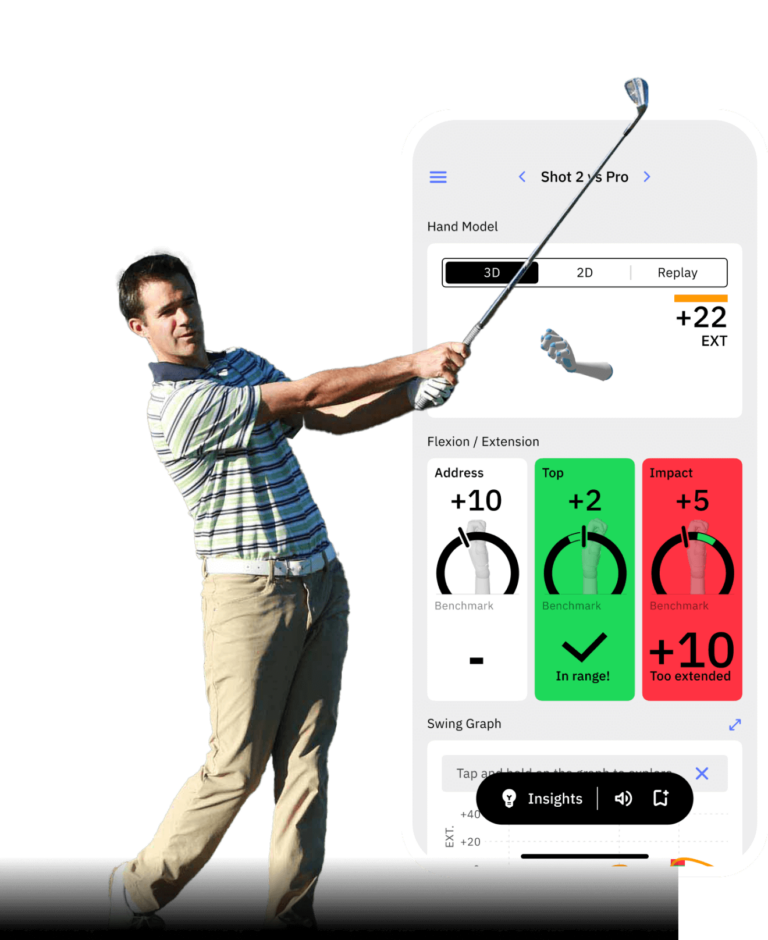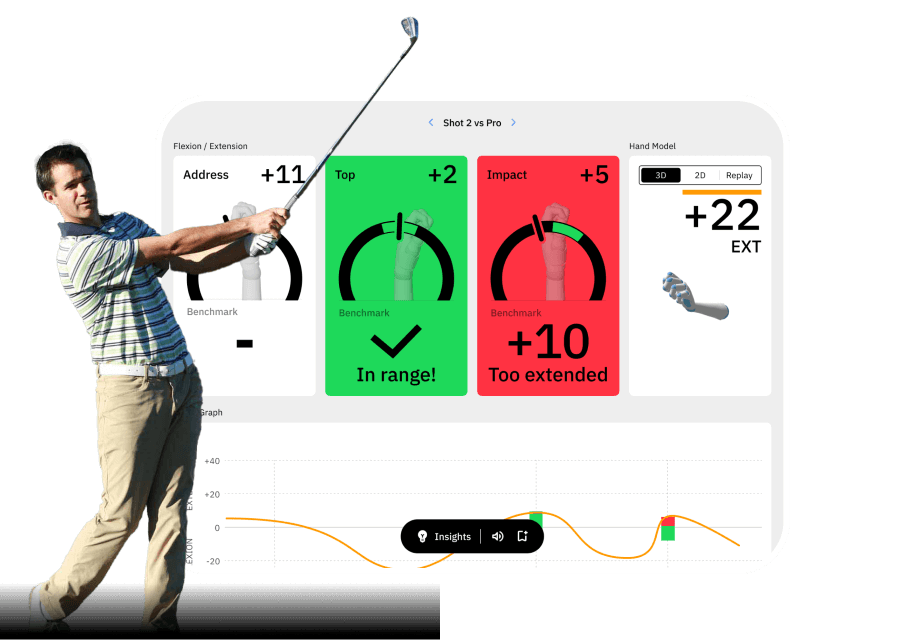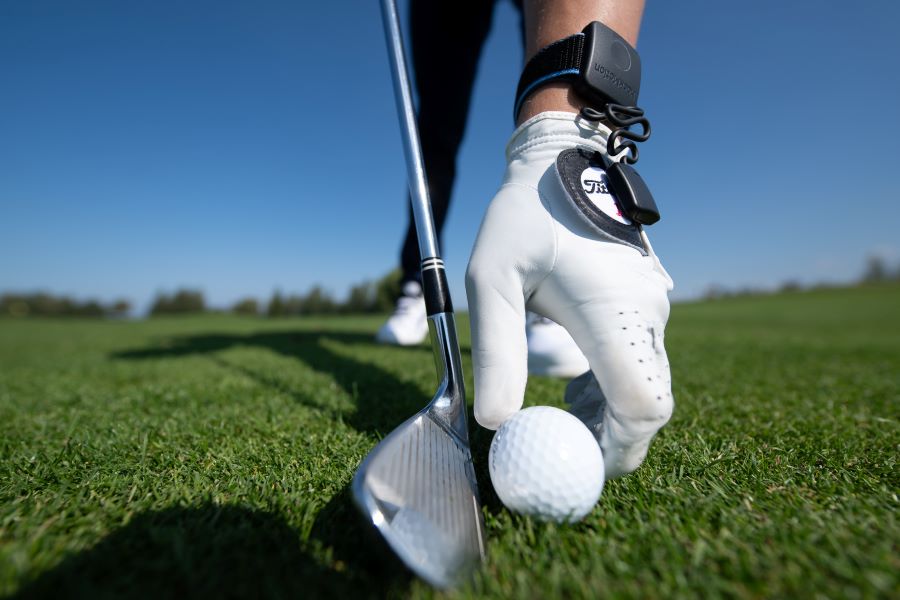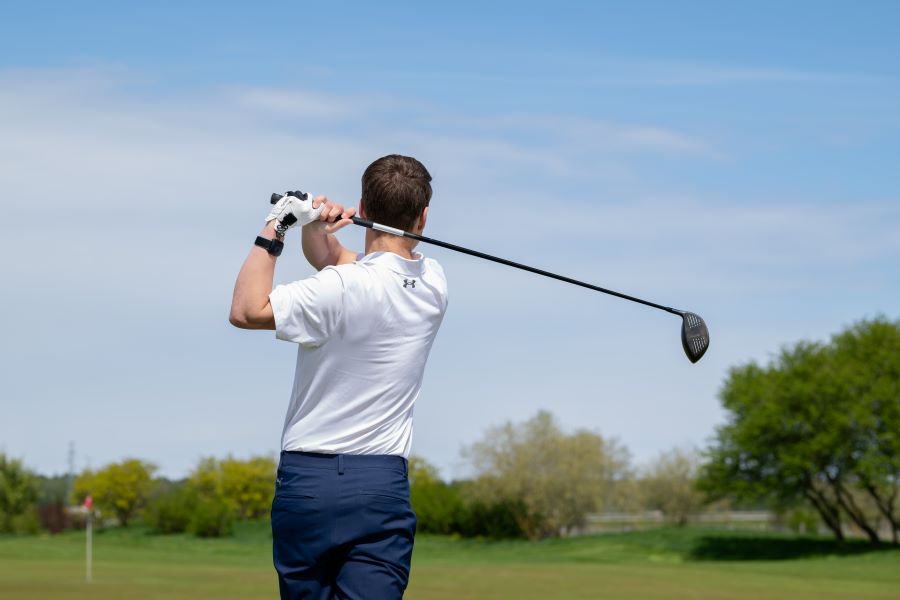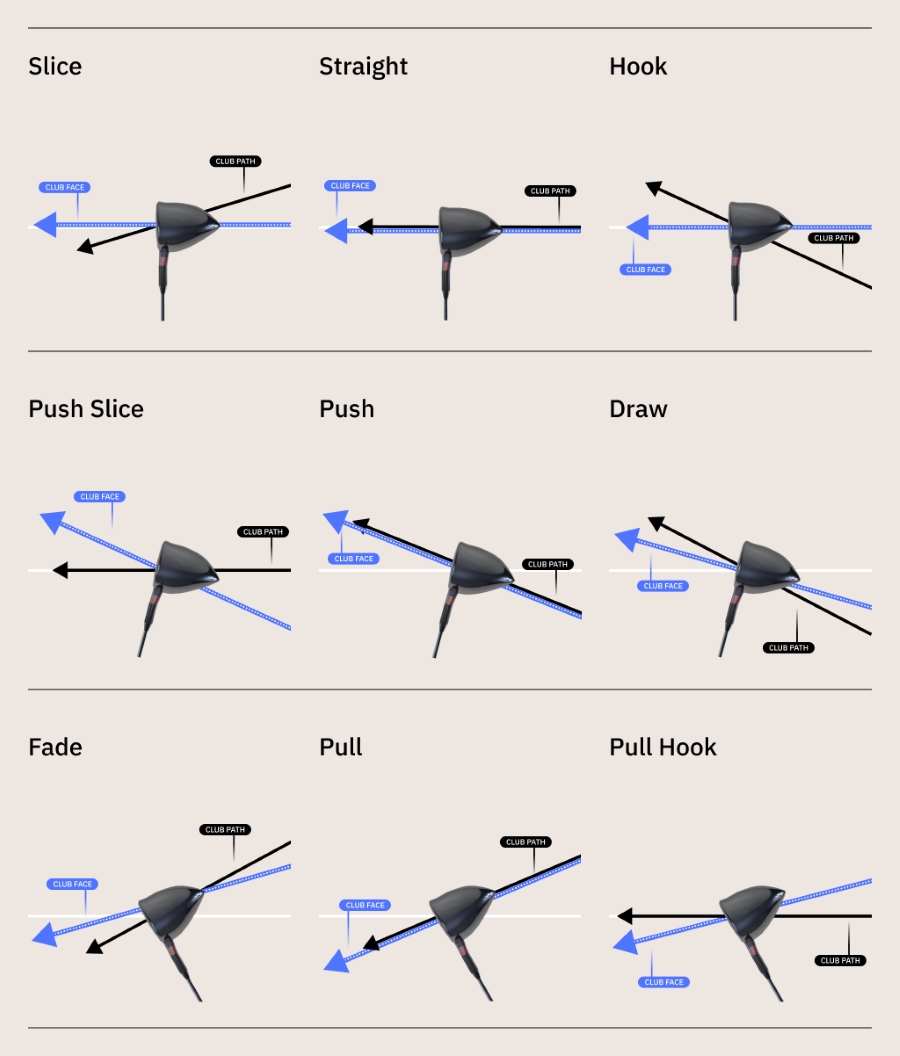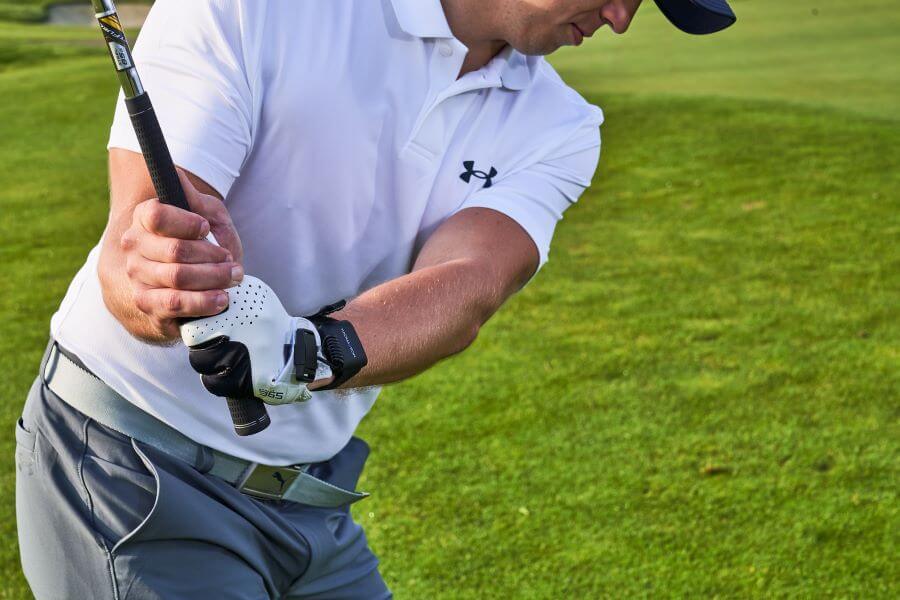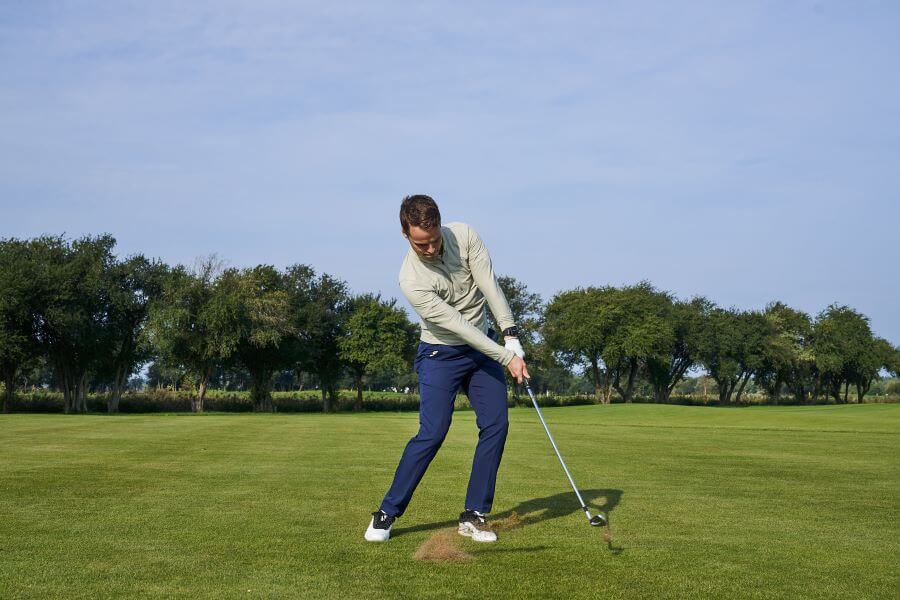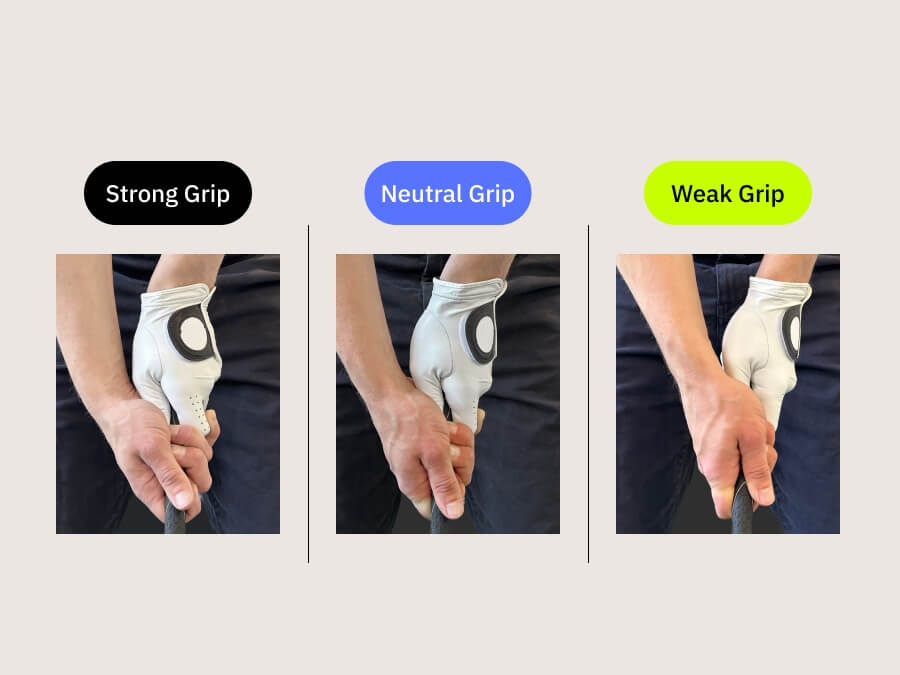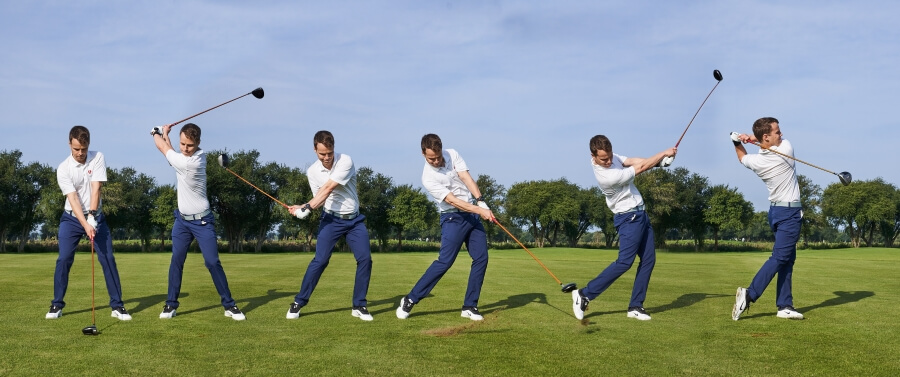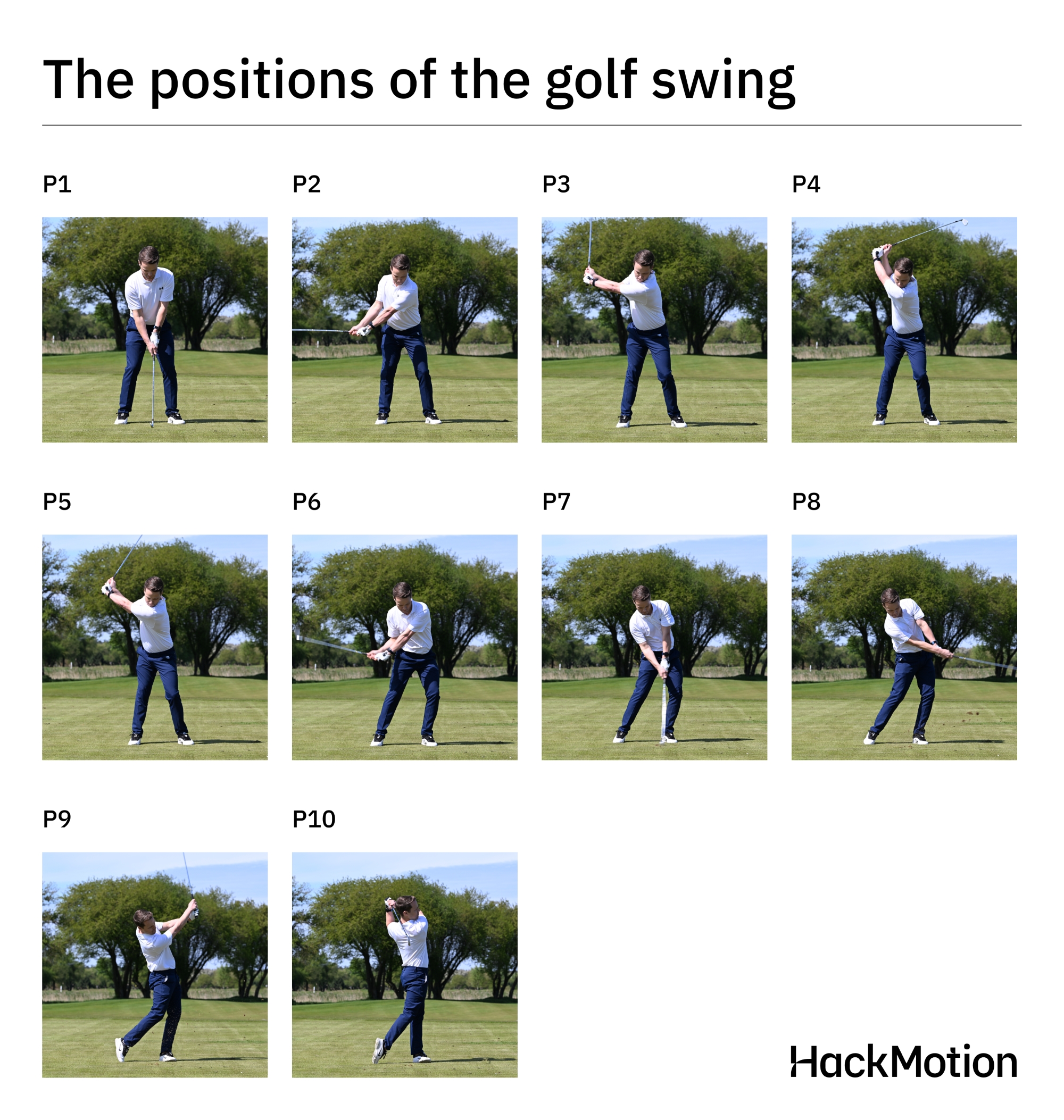The Wedge Swing vs The Iron Swing – Anything Different? (The Debate Ends Here)
In theory, when we are talking about a full golf swing, the fundamentals should, for the most part, remain intact.
With that being said, and in answering the question of this article, there are some differences that should be addressed regarding the differences between hitting your wedges and the rest of your irons.
In this article, I will cover what I think are the most important differences between your wedge play and iron play.
The Wedge Swing vs The Iron Swing – Too Long, Didn’t Read
Don’t have time to read my entire article? Here are the key points to remember.
- The basic fundamentals remain the same for both wedges and the rest of your irons. However, there are key differences in the setup for wedges, including ball position, stance width, and center mass position.
- Wedges require a shorter, slower, and more controlled swing than your other irons, and the club itself has more bounce.
- Wedge and iron strategies differ; with wedges, you aim for more controlled swings and hitting it close to the flag. While with irons, you aim to hit the green.
Contents
The Purpose of a Wedge and an Iron Shot
There is a major difference between the purpose of your wedges and the rest of your irons.
The wedges are your scoring clubs. Shots from roughly 100 yards and in make up 60% to 65% of all the shots you take in a round.
That is a big deal.
These are the tools, if perfected, that get you closer to your scoring goals quicker.
There is absolutely a misconception that exists in amateur golf as it relates to iron play.
Many amateur golfers think that they need to hit many more greens in regulation than is necessary for their particular handicap.
Or, more greens than necessary to get to a particular handicap level.
The reality is this.
The PGA Tour average for greens hit in regulation, a key stat driven by iron play, is roughly 65%.
This means that a Tour Professional, one of the best players on the planet, only hits 11-12 greens per round in regulation.
Many of my students feel like that is a level that they need to achieve…not knowing of course what the stats say.
We can break it down even further.
Let’s look at greens in regulation by handicap. (source)
- 0 Handicap – 58.09% (Roughly 10.5 greens in regulation)
- 5 Handicap – 45.38% (Roughly 8.2 greens in regulation)
- 10 Handicap – 34.66% (Roughly 6.2 greens in regulation)
- 15 Handicap – 25.98% (Roughly 4.5 greens in regulation)
- 20 Handicap – 20.44% (Roughly 3.5 greens in regulation)
- 25 Handicap – 16.23% (Roughly 2.9 greens in regulation)
So, to put it simply, your wedge shots, from those closer yardages, should be more of a focus for most amateurs.
These clubs are the ones that more golfers will be able to hit the green with more often. And…hit it closer to the pin.
In a very interesting graphic from Shot Scope, you can see that even higher handicappers still hit the green with their wedges from 60-100 yards.
True, their proximity to the hole is further than better players, but with a little dedicated practice, that can improve fairly quickly. Much quicker than with, say, a 7 iron.

Wedge and Iron Strategy
Coming off the heels of examining the purpose of your wedges versus your irons, we will now look at what strategy you should take with each. It is definitely different.
As mentioned in my previous section, on the purpose of wedge shots vs. iron shots, your wedges are your scoring clubs.
These are the tools you use in the scoring zone of 100 yards and in.
These clubs are meant to get the ball close to the hole. Not to see how far you can hit them.
That is a massive mistake I see with many amateurs. Especially junior golfers.
They become infatuated with how far they hit their wedges, and really, all their clubs for that matter.
This is a dangerous idea, and one that ultimately leads to poor results with all your clubs, but your wedges in particular.
Your strategy, especially with your wedges, should be to learn how to hit them solid, but in a way that you are swinging within your capabilities.
Hitting the green, or as close as you can with your long, and mid irons is the key. It does not matter what club you need to use to achieve that goal. As long as you can do it consistently.
Proximity to the hole comes more into play with your shorter irons and wedges.
There is no need to try to hit those clubs for distance. It is all about proximity to the hole.
If you need to hit a PW over a 52 degree wedge, so be it. That does not matter in the big picture.
If I can hit my PW closer to the hole from 100 yards than my competitor who is trying to muscle a 60 degree wedge, I win in the end.
It is all about proximity to the hole with your wedges… not about how far one can hit them.
In the following video, Peter Finch shows you how to unlock better wedge control.
In it, he provides you tips on how to play shots from 60 to 135 yards.
What’s the Same Between a Wedge and Iron Swing?
Some of the basics of the golf swing hold true throughout the bag.
Whether you are hitting a wedge, or a 4 iron, there are key components that should remain consistent.
Your Grip
Your grip is your body’s only connection to the club. With that in mind, it is important to have a good, consistent grip, both in hand position, and pressure.
That should remain constant throughout the bag.
Making sure that the hands work together, with one not trying to overpower the other, is very important with your wedges and all of your other irons.
Check out this video from GolfPass. In it, Martin Hall breaks down the proper grip.
The proper grip in golf can not be stressed enough. It is a massive key to consistency.
Your Wrists
Just as important as the grip itself is how the wrists work throughout the swing…for all shots, with wedges and irons alike.
As HackMotion shows us, the lead wrist has a direct correlation to what the face of the club is doing.
We want to try and have the lead wrist flat at the top, or even slightly bowed at impact.
The video below, from HackMotion, explains the function of the wrists in the golf swing.
Your Sequencing, Especially on the Downswing
One other area of note that needs to remain the same, regardless of a wedge shot or with another iron, is your sequencing.
Especially on the downswing.
The sequence of events in the downswing should be as follows:
- Pressure Shift Into Lead Foot
- Hips Start to Unwind and Clear
- Chest Starts to Unwind
- Hands Narrow
- Club Falls Behind and Shallow’s
- Clubhead Moves into Ball at Impact with Proper Shaft Lean
The body will slow down a bit allowing the energy to transfer into the clubhead as it approaches impact.
This is all the same regardless of what club you are hitting.
The video below, from Athletic Motion Golf, runs through the proper sequencing from the top of the swing and down through impact.
What’s Different Between a Wedge and Iron Swing?
Most of the major differences between a wedge swing and an iron swing come in the set up.
Looking at how each club, from a long iron and on down to your highest lofted wedges, has a different loft, you need to set some pre-swing conditions up accordingly.
Let’s look at those first.
Ball Position
As the loft of your clubs increase, in general, your ball position will move back in your stance.
For standard shots, you would never want to go any further back than just past center.
There are going to be cases where you can play around with that ball position. If you want to hit it higher, or lower trajectory for example.
The Good Good Labs talks about ball position in the video below.
Width of Stance
In general terms, the width of your stance should be set in relation to the width of your shoulders.
This takes into account the different body types golfers come in.
I have always taught the width of stance as follows:
- Driver – A step, with both feet, past shoulder width.
- Woods, Hybrids, and Long Irons (3, 4) – A half step, with both feet, past shoulder width.
- Mid-Irons (5, 6, 7) – Shoulder width.
- Short-Irons (8, 9) – Just inside of shoulder width.
- Wedges – Half step, with both feet, inside of shoulder width.
How do You Distribute Your Center Mass and Pressure
How you set your body up in your pre-swing check is critical to your ability to hit solid shots.
We touched on the differences in your ball position, and the width of your stance, now, we look at how you distribute your center mass, and movement of your pressure.
With your wedges, you will want to feel as though you have a little more weight set into your lead side.
When I say “weight” I want you to think of it in terms of your sternum, or center mass.
I like to suggest a feeling of about 55% of your center mass into your lead side, and about 45% into your trail side for your most lofted wedges.
As you move up, from a 60-degree wedge to a PW, I would ever so slightly slide that feeling to about 52% on the lead side.
As you get into your 8 iron and up, you will have about a 50/50 distribution of your center mass.
As you get up to your long irons, you will still keep your weight distribution the same, at 50/50, however, you will now introduce a touch of secondary spine tilt.
This is setting your spine back just a touch from being straight up and down.
To achieve this, you will slightly bump your lead hip towards the target and moving your upper torso back a touch towards your trail foot. You will still have your center set at about 50/50.
The video below talks about weight, or center mass distribution, as well as pressure shift. There is a difference.
Your pressure shift is more of a feeling of pushing your lead or trail foot into the ground.
As you start your backswing, you will still remain with that feeling of your center mass as suggested above, but you will shift your pressure into the lead foot initially, and push off of it from there as you shift into your trail foot.
The reason for having those initial set-up differences comes down to the loft of the club you are hitting.
The Swing Itself
The swing itself with wedges and irons is basically the same.
The sequencing and the basic movement of the swing is the same. Where things differ slightly is in the length of the swing and the speed of the swing.
The Length of the Swing
The length of the swing is somewhat dictated by the length of the clubs.
A 60-degree wedge is roughly 35” long, and a 4 iron is about 38.5” in length.
The length alone does not dictate completely what the length of the swing will be.
The golfer can and does still control how far back they swing the club.
With wedges, there is really no need to swing back as far as you would with say, a 4 iron. As said earlier, wedge shots are more about control and accuracy. A shorter, more controlled swing aids in that.
Swing Speed
Much like with the length of the swing, the speed of the swing is going to be influenced by the club itself. Its length, weight, etc.
Swing speed with different clubs can be seen in the chart below from TrackMan. Again, the higher the loft on the clubs, the more they are built for accuracy and control.
| Club | Average PGA Tour Swing Speed | Average LPGA Tour Swing Speed |
| 4 iron | 96 | 80 |
| 5 iron | 94 | 79 |
| 6 iron | 92 | 78 |
| 7 iron | 90 | 76 |
| 8 iron | 87 | 74 |
| 9 iron | 85 | 72 |
| PW | 84 | 70 |
| GW | 83 | 69 |
| SW | 82 | 68 |
| LW | 79 | 67 |
The Difference in the Clubs Themselves
The make of your wedges versus your other irons is very different.
The reason?
Well, the purpose of each club and what they mean for your game is different.
Above I talked a little bit on club length and how that affects your swing with each club.
In this section, I wanted to touch more on bounce.
What is Bounce?
In a previous post here on the HackMotion Blog, I touched on what bounce is.
According to Titleist, Wedge Bounce is the angle created between the leading edge of the club and the lowest point of the sole.
The greater the degrees of bounce, the higher the leading edge is off the surface at address.
This part of the club hits through the ground as it contacts the ball.
All golfers have little idiosyncrasies that make up their own unique game.
How they come into the ball at impact, whether it’s a little steeper, or a little shallower, will have an effect on how they hit their irons, and especially, their wedges.
With wedges having more loft, the leading edge is more in the picture as the club comes into the ball at impact.
That is where bounce comes in. It helps golfers make better contact on their wedge shots. This is far less necessary with your other irons.
Bounce is your friend, because it provides forgiveness on all wedge shots, allowing you to still strike the ball properly even if you make mistakes.
Bob Vokey
Check out the video below from the team at 2nd Swing Golf. In it, they help you understand bounce even more.
Practicing with Wedges and Irons
As discussed, one of the major differences between hitting your wedges verse hitting your other clubs is what the main objective is.
Granted, all golfers are trying to hit each of their clubs the closest they can to their target.
With your wedges, however, you are very much looking to accomplish that goal.
Wedges are your scoring clubs. Almost all golfers, regardless of ability, can hit shots from 100 yards and in on the green.
How close they hit it all depends on how efficient they are with their wedges and short irons.
Knowing your carry distance with each club is important. Many golfers do not know this and only guess most of the time on what club to hit from what distance.
Taking the time to get your average carry distances can help shave strokes.
Doing this with your wedges is essential. Again, that scoring zone, of 100 yards and in is of the utmost importance to playing well.
Putting an emphasis on practicing your distances and control with your wedges is something that all golfers can do and it will show pretty quick results if you are diligent in doing so.
Check out this article from a recent post I made here on the HackMotion Blog: 12 Pitching Tips to Improve Your Short Game. In the section of that post titled “Get Dialed In with Distance Control”, I give a great tip on how to get dialed in with your wedges.
In the following video, the guys from Golf Science Labs walk you through a simple golf test to figure out how to improve your approach play.
Summing it All Up
As you can see, there are many differences between your wedges and the rest of your irons.
From set up, where there are several differences, to the swing itself, which sees minimal differences.
Additionally, there is the purpose of your wedges as compared to your other irons.
Your wedges are more for scoring, and accuracy, much more so than your other irons.
It is a given, as your distance from the hole increases, your probability of hitting it close to the pin decreases. This is why your wedges are of great importance.
The clubs themselves are different too. Obviously, the lofts change as you move up from your lob wedge to your 4 iron.
Add to that, the length of the club, and the make of the clubhead changes too.
These are all in the interest of helping you achieve the ultimate goal, which are good, solid shots, that can get close to the target.
So, the Wedge Swing vs. the Iron Swing, is there anything different? There is indeed…and then some.
